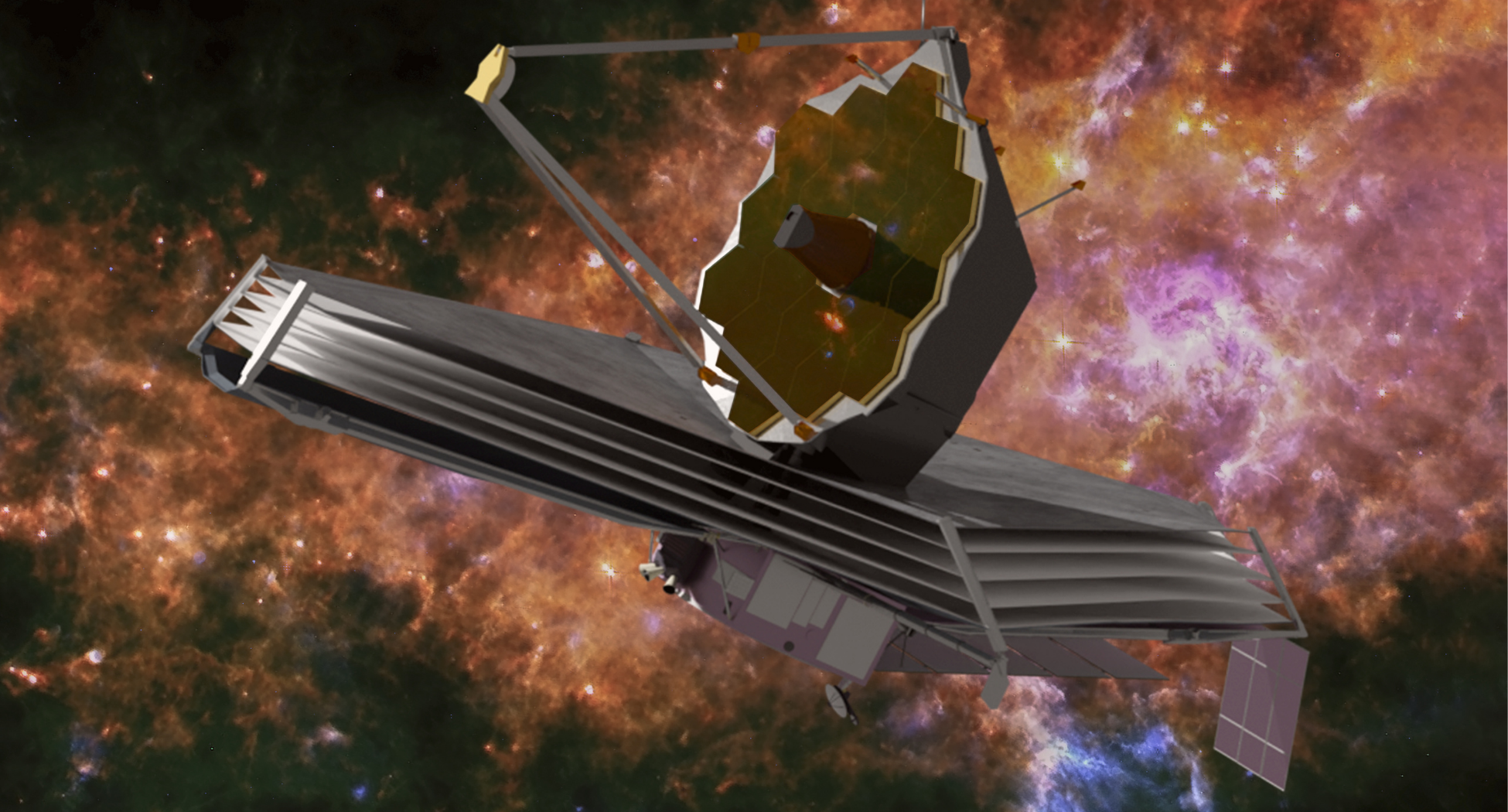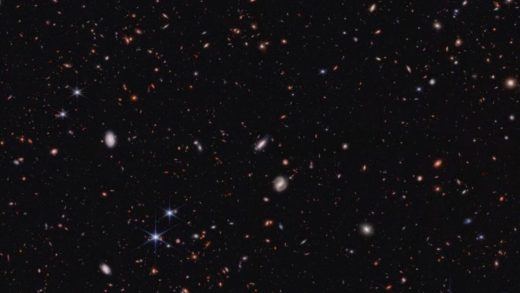James Webb Space Telescope’s First Images Coming Soon

First full-color images and spectroscopic data from NASA’s James Webb Space Telescope, a partnership with ESA (European Space Agency) and the Canadian Space Agency (CSA), are going to be released on 12 July, 2022.
Webb telescope is the largest and most complex observatory ever launched into space. The telescope has been going through a six-month period of preparation before it can begin science work, calibrating its instruments to its space environment and aligning its mirrors.
James Webb Telescope: How powerful is it?
James Webb Telescope is a joint project of NASA, the European Space agency (ESA) and the Canadian Space Agency (CSA). It is the largest space telescope ever built, with a 6.5 meter diameter mirror that will collect visible and infrared light from some of the earliest moments in our Universe.
It is named after American astronomer, engineer and aviation pioneer James E. Webb (1906-1992), former NASA Administrator from 1961 to 1968 and head of the Apollo program during which men first walked on the Moon.
The Webb Telescope is powerful enough to see back to the time shortly after the Big Bang, see how galaxies formed and evolve, and see how stars are born.
It is also capable of observing objects that are too small or too far away for other telescopes.
Is the telescope ready to function now?
After years of new technology development and mission planning, Webb has built up to the first images and data. NASA says it’s a demonstration of Webb at its full power, ready to begin its science mission and unfold the infrared universe.
Eric Smith, Webb program scientist at NASA Headquarters in Washington, said, “As we near the end of preparing the observatory for science, we are on the precipice of an incredibly exciting period of discovery about our universe. The release of Webb’s first full-color images will offer a unique moment for us all to stop and marvel at a view humanity has never seen before”. Smith further added, “These images will be the culmination of decades of dedication, talent, and dreams – but they will also be just the beginning”.
It has been more than five years working on making decision about what Webb should look at first in the project undertaken by an international partnership between NASA, ESA, CSA, and the Space Telescope Science Institute (STScI) in Baltimore, home to Webb’s science and mission operations.
Astronomer Klaus Pontoppidan, Webb project scientist at STScI said that their goals for Webb’s first images and data are both to showcase the telescope’s powerful instruments and to preview the science mission to come. Pontoppidan added, “They are sure to deliver a long-awaited ‘wow’ for astronomers and the public”.
First images of the Webb Telescope are coming soon: How are astronomers reacting to the upcoming event?
According to NASA, the first images and spectroscopic observations will be made after each of Webb’s instruments has been calibrated, tested, and given the green light by its science and engineering teams. The team is to proceed through a list of targets that have been preselected and prioritized by an international committee to exercise Webb’s powerful capabilities. After that, the production team will receive the data from Webb’s instrument scientists and process it into images for astronomers and the public.
Stating that she feels very privileged to be a part of it, Alyssa Pagan, a science visuals developer at STSc, said, “Typically, the process from raw telescope data to final, clean image that communicates scientific information about the universe can take anywhere from weeks to a month”.
What will we get to see in the first images?
Careful planning for Webb’s first full-color images has been underway for a long time. But, as astronomers say, the new telescope is so powerful that it is difficult to predict exactly how the first images will look. Quoting to STScI’s lead science visuals developer Joseph DePasquale, NASA said, “Of course, there are things we are expecting and hoping to see, but with a new telescope and this new high-resolution infrared data, we just won’t know until we see it”.
Astronomers say these new images will be the first in full color and the first to showcase Webb’s full science capabilities.
Except these imagery, Webb will be capturing spectroscopic data – detailed information astronomers can read in light. The first images package of materials will highlight the science themes that inspired the mission and will be the focus of its work, which is the “early universe”, the “evolution of galaxies through time”, the “lifecycle of stars, and other worlds” etc. According to NASA, all of Webb’s commissioning data – the data taken while aligning the telescope and preparing the instruments – will also be made publicly available.
Next step of the Webb Telescope
After capturing its first images, Webb’s scientific observations will begin, continuing to explore the mission’s key science themes. Webb is expected tol solve mysteries in our solar system, look beyond to distant worlds around other stars, and probe the mysterious structures and origins of our universe and our place in it.
Is it a big leap in exploring the universe?
Of course! Since James Webb in its development stages had been more than 20 years, a lot of things have changed over the last two decades. For instance, from the time we got to know an actual universe when we look at our Earth and our Sun from above, telescopes have made enormous strides forward.
With such a big telescope comes lots of responsibility for any team that works on it to make sure that no detail is overlooked. Leaving no stone unturned! Scientists say they are getting ready to reserve their first images as they prepare to put Webb through its paces. They also want to be prepared against any problems that may crop up during testing and commissioning of the telescope.


